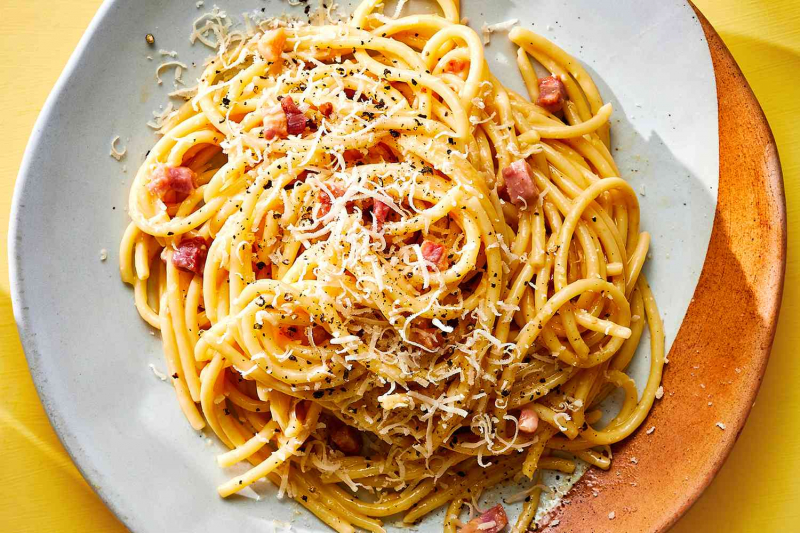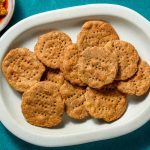Bacon and Eggs, But Make It Pasta
Prep: 10 mins
Cook: 15 mins
Total: 25 mins
Servings: 4 servings
Yield: 1 pound pasta
Silky and rich, pasta carbonara is a much-loved dish because of the simplicity of its ingredients and the ease of preparation. Real pasta carbonara is a basic combination of pasta, eggs, pork, cheese, a splash of pasta water, salt and pepper.
True pasta carbonara never has any cream in the sauce or any garlic. Many legends surround the origins of carbonara, but most agree that it originated in Rome in the mid-20th century.
The Ingredients for Pasta Carbonara
The number of eggs used to make Carbonara varies from recipe to recipe, but the more eggs you use, the silkier and richer the sauce. Our version uses two large eggs and four egg yolks.
Guanciale is ideal for the pork, but pancetta or a good quality thick bacon is just fine. I;m using pancetta and freshly grated Parmesan cheese in this recipe. There are other options for cheese—Pecorino Romano, Parmigiano Reggiano, Grana Padano, and Asiago. Freshly grated will give your carbonara the best flavor and texture.
While garlic is nontraditional, you may sauté 4 or 5 minced garlic cloves with the pancetta during the last 2 minutes of cooking time.
What's The Difference Between Carbonara and Alfredo?
Traditional carbonara is a sauce made with whole eggs and egg yolks, Parmesan cheese and splash of the pasta water to create a rich and creamy sauce, without any cream. Carbonara also contains pork– pancetta or guanciale (thick cut bacon will do in a pinch).
On the other hand, Alfredo is a rich sauce that primarily contains butter, Parmesan cheese, and cream.
Does Carbonara Have Raw Egg?
The hot pasta will cook the eggs enough to thicken the sauce, but not to a temperature that is considered fully cooked. If you are concerned about the consumption of slightly under-cooked eggs, use pasteurized eggs.
Carbonara Tips
- It is important to use freshly grated Parmesan in the carbonara otherwise it will not melt into the sauce properly.
- The pork used should be fatty enough to yield a few tablespoons of drippings.
- Avoid over-salting the cooking water. You'll be using some of that water to make your sauce.
Why Is My Carbonara Dry?
Your carbonara could turn out dry if you didn't add enough of the reserved pasta water or if you didn't add enough egg yolk. Follow this recipe precisely and you will have a creamy, luscious sauce that isn't dry or over-cooked.
Your carbonara might also be try if it sits for too long before serving, or it's been reheated. Carbonara is best eaten immediately after its cooked.
“I’m such a big fan of pasta carbonara and this recipe turned out exactly the way carbonara should be. It’s rich, creamy, and perfect for a weeknight. Making carbonara can be tricky, but if you follow this recipe step by step, you’ll be good to go.” —Tara Omidvar
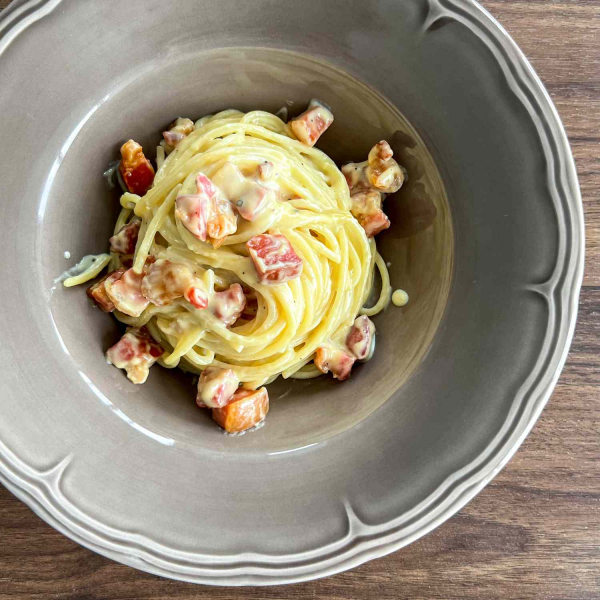
A Note From Our Recipe Tester
Ingredients
-
4 teaspoons Diamond kosher salt, for the pasta water, plus more to taste as needed
-
2 large eggs
-
4 large egg yolks
-
2 ounces freshly grated Parmesan cheese, about 3/4 cup
-
1/2 teaspoon freshly ground black pepper, more to taste
-
1 tablespoon olive oil
-
4 ounces diced pancetta, guanciale, or thick bacon
-
1 pound pasta, such as spaghetti, bucatini, or fettuccine
Steps to Make It
-
Gather the ingredients.
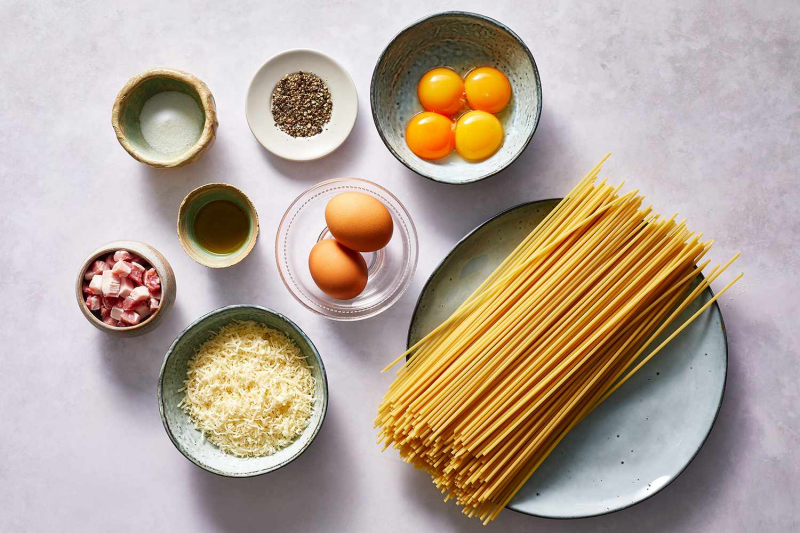
-
In a large pot, bring 4 quarts of water and 4 teaspoons of kosher salt to a boil over high heat.
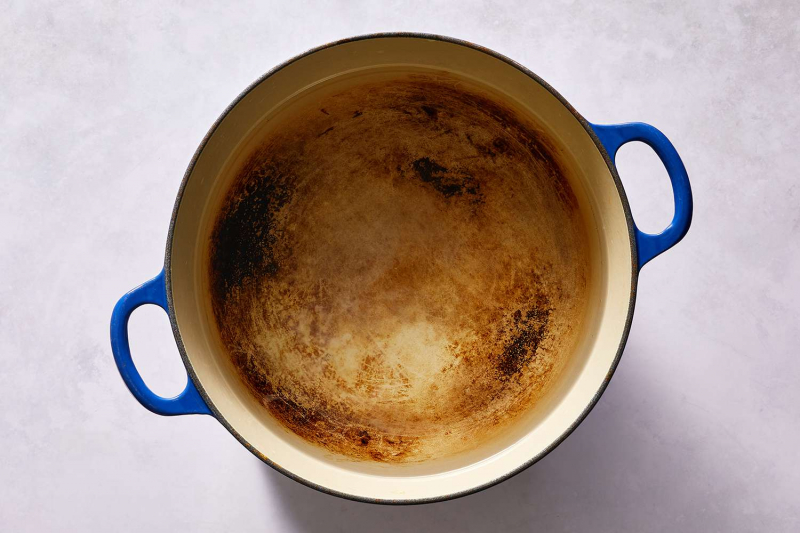
-
In a medium bowl, whisk the eggs and egg yolks together; add the Parmesan cheese and black pepper and whisk until well blended. Set aside.
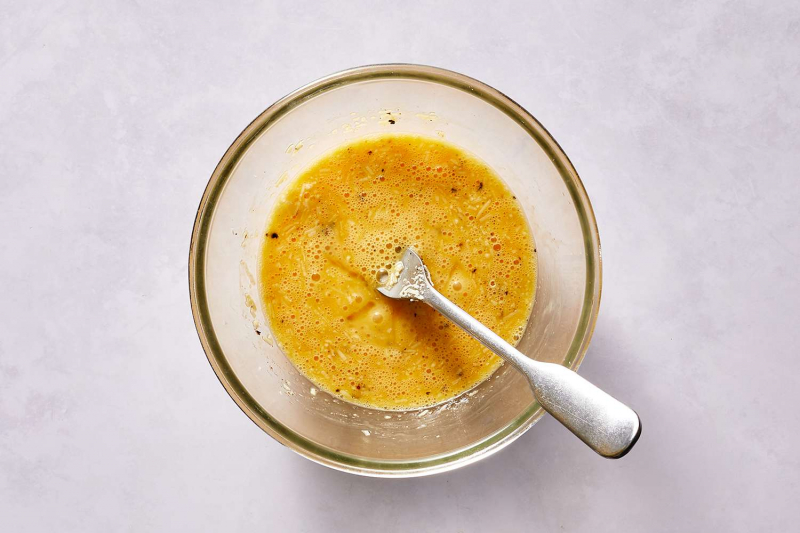
-
Heat the olive oil in a deep sauté pan or Dutch oven over medium heat. Add the diced pancetta and cook for about 4 to 6 minutes, or until slightly crisp. Turn off burner.
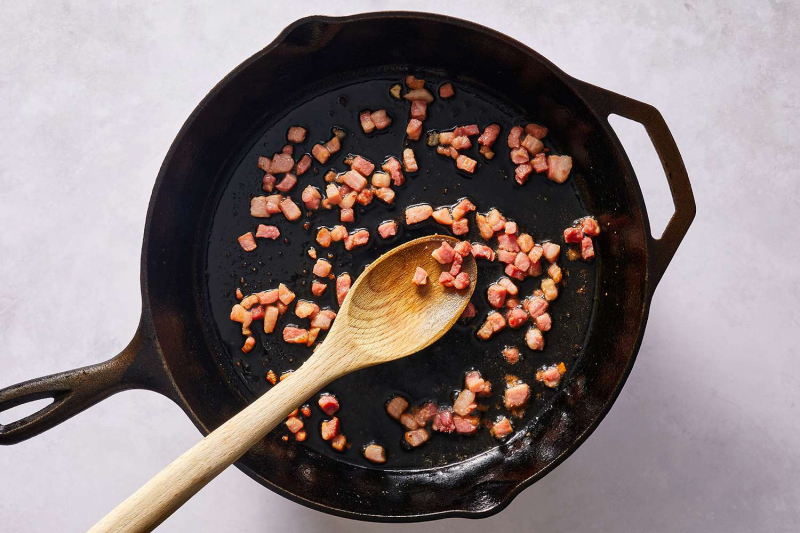
-
Once the water reaches a boil, add the pasta to the boiling water and cook following the package instructions for al dente pasta.
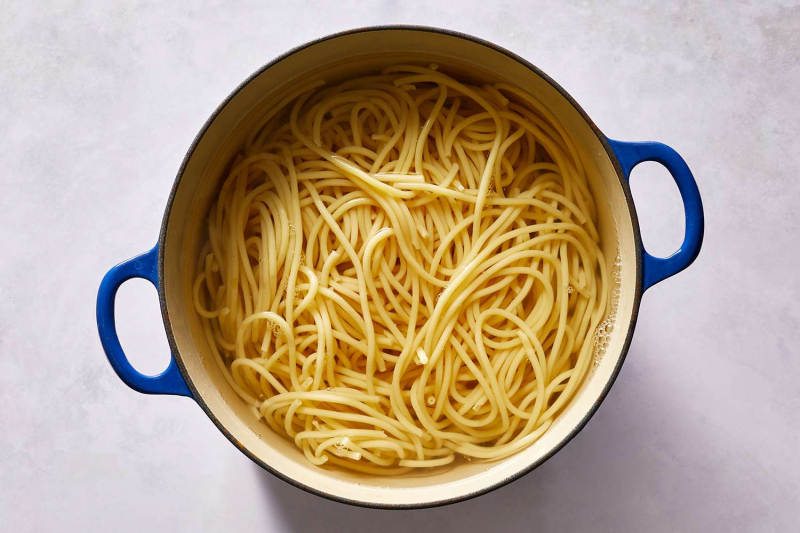
-
Remove about 1 cup of the pasta water and set it aside. Drain the pasta in a colander.
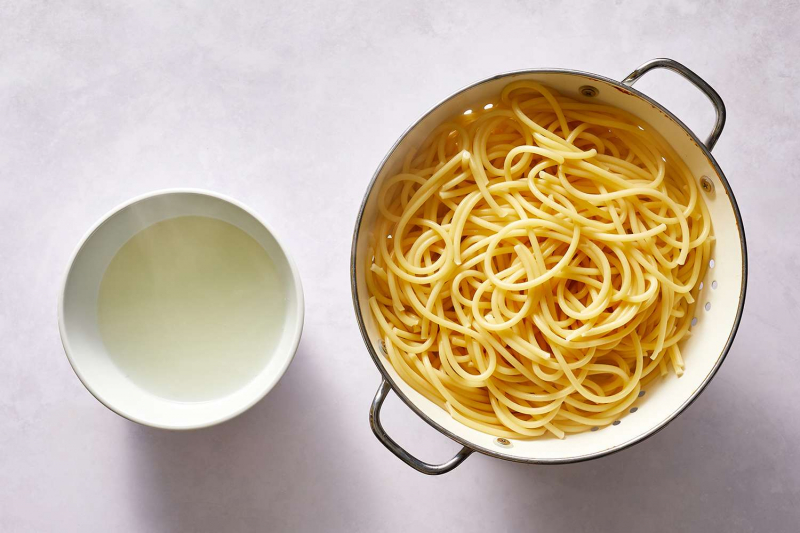
-
Add about 1/2 cup of the reserved hot pasta water to the pancetta and bring to a boil over medium-high heat. Add the drained pasta and continue to cook, stirring, for 1 minute.
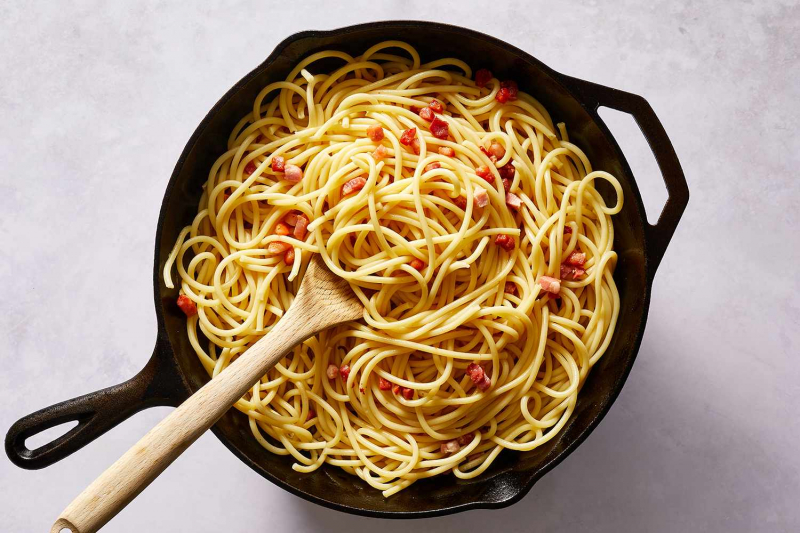
-
Gradually whisk about 1/4 cup of the reserved hot pasta water into the egg and Parmesan cheese mixture.
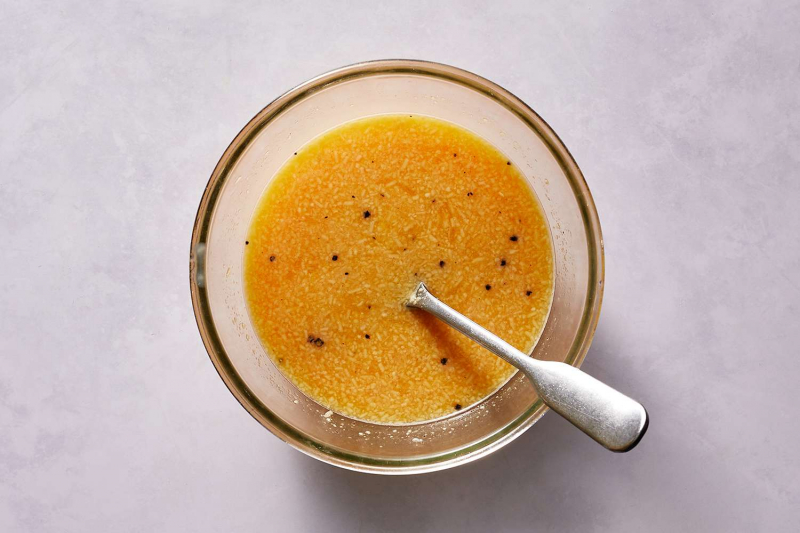
-
Remove the pan from heat. Gradually add the egg and cheese mixture to the pasta, stirring and constantly tossing with tongs until the sauce is silky and clings to the pasta. Add more of the hot pasta water in order to thin the sauce, if needed.
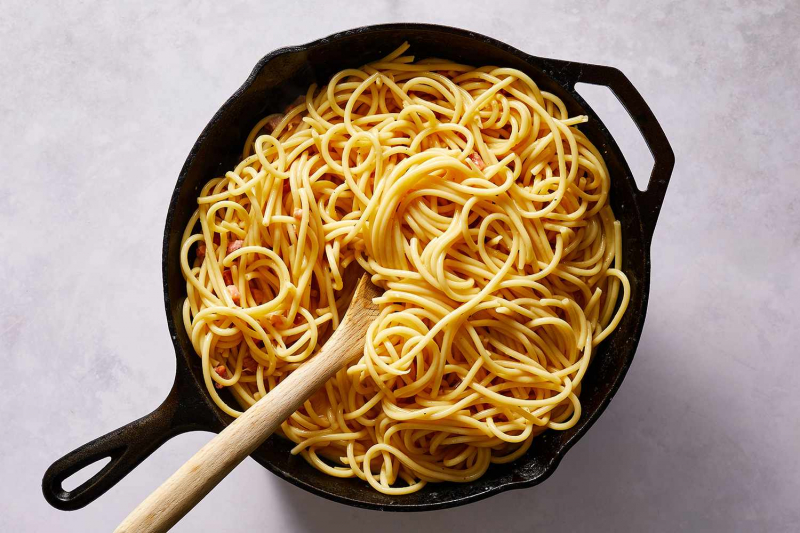
-
Serve the pasta with extra Parmesan cheese and a generous grinding of black pepper.
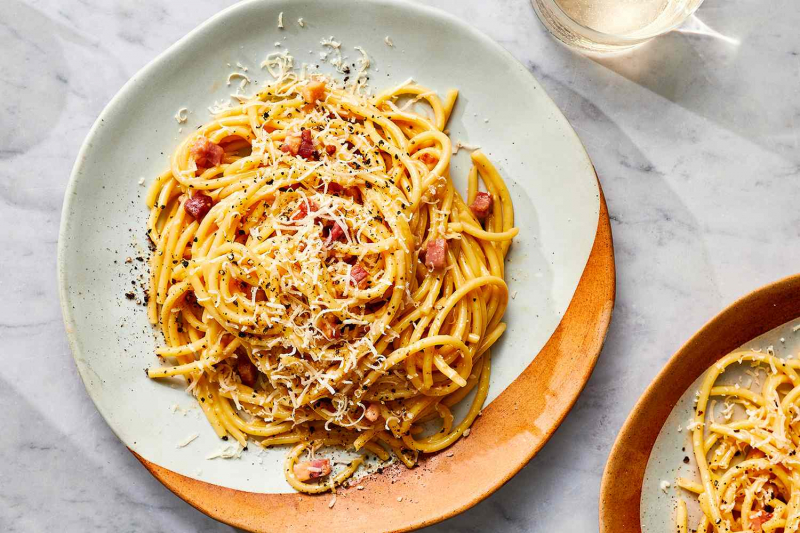
Leftover Carbonara
Carbonara does not keep well, so it's best to eat it immediately. If you have leftover carbonara, reheat it gently over low-heat with a splash of water to loosen the sauce. It will still taste good but will not have the same silky, creamy texture as the first time.
Raw Egg Warning
Consuming raw and lightly-cooked eggs poses a risk of food-borne illness.
| Nutrition Facts | |
|---|---|
| Servings: 4 | |
| Amount per serving | |
| Calories | 537 |
| % Daily Value* | |
| Total Fat 32g | 41% |
| Saturated Fat 11g | 55% |
| Cholesterol 358mg | 119% |
| Sodium 2489mg | 108% |
| Total Carbohydrate 38g | 14% |
| Dietary Fiber 2g | 8% |
| Total Sugars 1g | |
| Protein 23g | |
| Vitamin C 0mg | 0% |
| Calcium 180mg | 14% |
| Iron 3mg | 18% |
| Potassium 240mg | 5% |
| *The % Daily Value (DV) tells you how much a nutrient in a food serving contributes to a daily diet. 2,000 calories a day is used for general nutrition advice. | |
